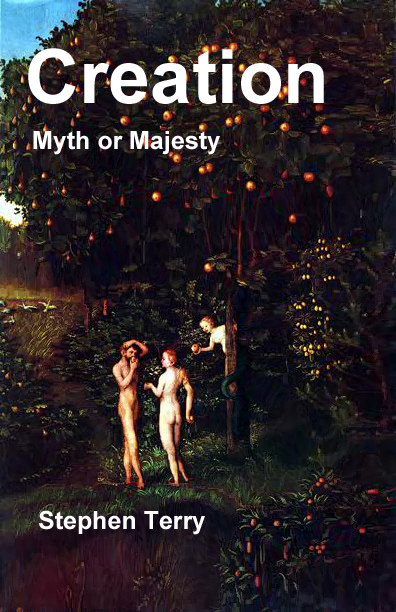The
Church Militant
Stephen
Terry
Commentary
for the March 19, 2016 Sabbath School Lesson
 “I
turned around to see the voice that was speaking to me. And when I turned I saw
seven golden lampstands, and among the lampstands was someone like a son of
man, dressed in a robe reaching down to his feet and with a golden sash around
his chest. The hair on his head was white like wool, as white as snow, and his
eyes were like blazing fire. His feet were like bronze glowing in a furnace,
and his voice was like the sound of rushing waters. In his right hand he held
seven stars…” Revelation 1:12-16a, NIV
“I
turned around to see the voice that was speaking to me. And when I turned I saw
seven golden lampstands, and among the lampstands was someone like a son of
man, dressed in a robe reaching down to his feet and with a golden sash around
his chest. The hair on his head was white like wool, as white as snow, and his
eyes were like blazing fire. His feet were like bronze glowing in a furnace,
and his voice was like the sound of rushing waters. In his right hand he held
seven stars…” Revelation 1:12-16a, NIV
The introduction to the messages to the seven churches
and the messages themselves are well known, not only to Seventh-day Adventists,
but throughout Christendom. Although the validity of including the Book of
Revelation within the biblical canon continued to be debated all the way to the
16th century when Luther wanted to exclude it from his Bible, its
authenticity is no longer questioned in most modern denominations. This does
not mean that there are not issues, however. But those issues tend to be around
how to interpret the material in the book rather than regarding its
authenticity.
One of those interpretive “dust ups” comes concerning
the significance of the messages to the seven churches. While most understand
that there were actual physical churches at the locations identified in the
messages, the relation of those messages to those churches may not be entirely
clear. Some have worked very hard to find parallels between what may have been
going on in those churches with the strengths and weaknesses identified within
each message. But because we do not have perfect knowledge regarding those
ancient churches and their activities, this often degenerates into a guessing
game with a fair number of assumptions being made. Perhaps because of this
difficulty, some feel driven to offer other interpretations regarding these
messages. After all, Revelation is a book filled with prophetic symbols. Why
wouldn’t these messages be symbolic in some way as well? This can place us on
tenuous ground because it can be very difficult to find what is at times can be
a nearly invisible line between what is literal and what is symbolic.
Recognizing this, some have advocated a position of these passages being both
messages to the literal seven churches as well as prophetic messages to the
church through the ages and into the present. This approach has been commonly
used for prophetic writings found elsewhere in the Bible as well. But even with
this approach there are different interpretations.
Some see the symbolic aspect of the messages as being a
timeline of the history of the church with each message representing a
different period in the linear progression of church history. While this may
seem perfectly suited to those of us living a few thousand years later and
believing we are in the last days before the Parousia, it might negate the
possibility of these messages being for earlier audiences. With our 20/20
hindsight, we can more or less arbitrarily assign the various messages to
various churches based on our partial knowledge of church history and make it
seem to fit, but several problems arise with that approach. First it may negate
the applicability of those messages to the churches in the time and place when
the book was written. After all, if these represent epochs of church history of
several centuries in duration each, how does the church of John’s day relate to
that when they apparently believed that the Parousia was an imminent event?[i] Likely they simply thought
the messages were simply letters to address what was going on in their day in
those churches. Maybe that could be instructive to us regarding how to
understand these messages.
Another problem with seeing this as presenting a
timeline to the second coming is that those who live in the imminence of that
event will tend to always see themselves as the church of Laodicea. Whether
reading these messages today or from the perspective of second century
Christianity the church would necessarily have to be the lukewarm one or the
Christians of that era would be tempted to abandon the idea of a soon return
for Jesus. After all, if they were not the final church, His coming could not
be so near. Therefore in order to preserve the idea of imminence, they would be
led to conclude they were Laodicea if our present perspective was common to
theirs. Although they felt the signs were adequate for that return, we can look
back today and see they were wrong. But do we commit the same errors when we
make the same assumptions and call ourselves Laodicea? Sadly, we sometimes take
this a step further and enter into a circular reasoning that can be hard to
break out of for some. We feel that the church right before Jesus’ return is
the Laodicean church. Therefore since Jesus is coming soon, our present church
must be Laodicea, and because we impose Laodicea on the present church, we see
from this self-identification that Jesus must be coming soon, and the circle
goes round and round.
Perhaps part of what creates these issues is the
tendency of modern literature to develop following a specific linear plotline.
While there are exceptions, stories, both fictional and non-fictional tend to
build tension toward a denouement. When we impose that pattern of thinking
here, the obvious denouement is the Parousia, and each chapter up to that event
builds toward it with increasing tension. While what is in these messages may
lend itself to some degree to that approach, it is not a perfect fit. For
instance, if we see each church as a period of history where each message
historically follows the previous one and yields to the one following until the
denouement promised in the Laodicean message, then we have a problem with
Thyatira. For in Thyatira the message indicates that that church will remain
until the Parousia and so is not replaced chronologically by those following.[ii] Perhaps this is a clue
that there is a better way to look at these messages.
Instead of following modern methods of literary
composition we might do well to consider the literary habits of those more
ancient times. Many places in the Bible we find chiastic structures used in
both obvious and subtle ways. I have always appreciated the subtle beauty of
the Creation Story of Genesis, chapter 1. In that account, we find the events
of the first day to be necessary for what is to come on the fourth day, the
events of the second day for those of the fifth and the events of the third
likewise for those of the sixth. The beauty of this poetry of ascents spiraling
upward to the Sabbath focal point inspires me to no end, especially when I
consider the parallel in nature between the spiral strands of our genetic
material that seem to mimic this literary device.
Is it possible that what we have taking place in the
messages to the seven churches is something similar? If so, then perhaps just
like Creation, each church is manifest in the present and in every age in both
their strengths and their weaknesses. In that event, it may not be a
progression of historical epochs but rather each church is a further
enlightenment defining the church. Instead of considering ourselves the
Laodicean church and relegating those other churches to the dusty halls of
ancient history, perhaps we are to recognize them as alive and well. Ephesus,
Smyrna, Pergamum, Thyatira, Sardis, Philadelphia and Laodicea may all be
present in the modern church and may have always been with us from the time
John penned those messages.
We see clues to this viewpoint in some of the imagery we
are given. For instance, Jesus is not portrayed as walking from one lamp to the
next, but rather as among all the lamps at the same time. He is not seen as
holding the stars representing the messengers to the seven churches one after
the other but rather He is holding them all simultaneously. We also see clues
in the rest of Revelation, because even there if we try to impose a linear
progression through the various symbols, we eventually get to the point where
there is no way to do so without doing a little backtracking due to the
somewhat chiastic parallels we encounter. Applying sequential interpretations
to the messages to the seven churches may disassociate us from very important
messages to the earlier churches in favor of the message to the last one,
messages that may be meant to prepare us for the return of Christ. Perhaps it
is not enough to ask if we are lukewarm. Have we preserved our love for God?
Are we faithful when challenged for our faith? Do we weaken the church by
encouraging those things that would tempt others to fall as Balaam did? Do we
tolerate the spirit of Jezebel within the church? Have we allowed faith to die?
Have we wrongly encouraged those in our midst who claim to be what they are
not? Have our deeds become tepid?
Perhaps rather than these churches representing an
inevitable, historical progression to the lukewarmness of Laodicea, they are
each identifying the various symptoms that have in the past and continue today
to challenge the church. In recognition of those challenges we may find the
militancy that will through the grace of God bring about the church triumphant.
It is only through understanding our failings that we may find repentance, and
only through repentance that we may find restoration with God through Jesus.
Perhaps it is necessary to not only find our personal restoration but to seek a
corporate restoration as well.
